The brand-new Asus ZenFone 6 is the latest flagship smartphone and comes with an unusual camera concept: instead of two camera modules—one on the front and another on the back—the ZenFone 6 features a single module that can rotate to point outward or toward the photographer.
This eliminates the requirement for a “camera notch” in the display, but also means that the same camera hardware can be used to capture standard pictures and self-portraits. In the case of the ZenFone 6, this hardware consists of a primary camera with a large 1/2″ Quad-Bayer sensor that outputs 12Mp images and a secondary ultra-wide angle with an 11mm equivalent focal length. (Note that our test protocol does not currently covered the latter, however.) The ZenFone 6 modifies its imaging parameters depending on which direction the camera is pointed.
To find out what kind of image results the Asus ZenFone 6 camera is capable of producing in selfie mode, read our full report below.
Key front camera specifications:
- Rotating dual-camera
- Primary 48Mp Sony IMX586 1/2″ sensor, f/1.8-aperture lens with 26mm-equivalent focal length
- Ultra-wide: 13Mp sensor, f/2.4-aperture lens with 11mm-equivalent focal length
- PDAF and laser autofocus on primary camera
- 2160p video at 30 frames per second (4K)
- Dual-LED flash
- Qualcomm Snapdragon 855 chipset
About DxOMark Selfie tests: For scoring and analysis in our smartphone front camera reviews, DxOMark engineers capture and evaluate over 1500 test images and more than 2 hours of video both in controlled lab environments and in natural indoor and outdoor scenes, using the camera’s default settings. This article is designed to highlight the most important results of our testing. For more information about the DxOMark Selfie test protocol, click here.
Test summary


With an overall DxOMark Selfie score of 98 points, the Asus ZenFone 6 beats the competition by quite some margin and is the new number one in our DxOMark Selfie ranking. This is to a large degree due to its outstanding Video score of 93 points, which is by far the best we have seen to date. Its 101-point Photo performance is also excellent, but “only” matches the current best-in-class devices without surpassing them.
Thanks to the ZenFone’s unusual rotating camera, it can rely on an unusually large 1/2″ sensor for front camera images—and makes full use of it. Zenfone 6 images show the best texture-noise trade-off we have seen on a front camera, with excellent detail across all light levels, down to very dim conditions. At the same time. noise is always well under control and images show pleasantly natural detail rendering, with lots of fine textures but no over-sharpening.
Despite some minor irregularities, still images also show generally very good color rendering, with accurate white balance and pleasant skin tones in all conditions. Exposure on faces is usually spot-on, and a good dynamic range means the Asus can often maintain better highlight detail in high-contrast scenes than the competition.
Its PDAF and laser autofocus system has been very well implemented and tuned, which means that the ZenFone 6 has a better focus range than its fixed-focus rivals. Selfie images show well-focused subjects, whether shot close-up or from a selfie-stick. On the other hand, depth of field is quite shallow, which is pretty much the large sensor’s only downside. This can be a positive when shooting a one-person selfie, as the camera creates a quite pleasant natural bokeh; however, when capturing a group, people at the back tend to be out of focus, and the same is true for the background.
The Asus’s dual-LED flash provides decent detail and well-controlled noise levels on faces in low-light conditions, although a noticeable red-eye effect remains a point for improvement. Thanks to its dual-camera, the ZenFone 6’s bokeh simulation mode delivers very good results as well, with excellent depth estimation, a pleasant blur gradient, and foreground blurring.
The Asus surpasses the competition quite comfortably in Video mode. Thanks to 4K recording by default, the camera delivers by far the best video detail we have seen on a front camera, while keeping noise levels well under control in bright light and when recording indoors. Just as with stills, videos show vibrant colors with good skin tones and generally good exposures, with occasional instabilities in changing light conditions.
Stabilization is good for both walking movement and for counteracting hand-shake when holding the camera still. The autofocus can be a little unstable sometimes, but usually keeps the subject in focus across all typical selfie shooting distances. As with stills mode, the shallow depth of field can be a pro or a con, depending what you want to get out of the scene.
There is still some room for improvement, but overall, the ZenFone 6 offers by far the best front camera video of all devices we have tested up to now, making it an interesting option for youtubers, vloggers, and video content creators generally.
Photo scores explained
With a Photo score of 101 points, the Asus ZenFone 6 is on par with the very best front cameras we have tested to date. We calculate the photo score from results and analyses of tests that examine different aspects of a device’s still-image performance under different lighting conditions. In this section, we’ll take a closer look at these image quality sub-scores, analyzing some aspects of the Asus ZenFone 6 versus its key competition.

Exposure and Contrast
Asus ZenFone 6
75
91
The Asus ZenFone 6’s exposure system generally delivers good results, with well-exposed faces in pretty much all shooting conditions. There is very little to complain about in the outdoor shot below, for example: exposure on the face and contrast are good, and dynamic range is wide, with very little highlight clipping on the skin tones. In comparison, the Google Pixel 3 is a touch darker overall, with stronger contrasts. The Samsung produces the brightest exposure of the three, which results in higher levels of clipping on the skin tones. On the downside, our testers occasionally observed exposure instabilities that produced slightly different results between shots in a series.
Face exposure is also very good in the second sample, with good highlight retention in the background.
Face exposure remains good in indoor shots as well. Thanks to its wide dynamic range, the Asus is capable of maintaining better background detail in the backlit portrait shot below than the Google and the Samsung, which both show noticeably more highlight clipping.
Target exposure is slightly dark in low light when compared to the competition, especially compared to the Samsung Galaxy S10+. However, when viewed in isolation, the ZenFone 6’s exposure is still good in dim conditions.

Color
Asus ZenFone 6
93
105
The ZenFone 6 achieves the best results for front camera color to date, thanks to pleasant skin tone rendering and accurate white balance in most situations and across all light conditions. Skin tone rendering in the outdoor portrait below is excellent, but there is still some room for improvement, however, as we very occasionally saw some slightly reddish skin tones in our samples.
Skin tone rendering is generally very good for all types of skin, as you can see in the indoor group shot below. White balance is neutral as well for this shot. On very rare occasions we observed a slightly blue cast when shooting indoors, however. The device maintains good color in low-light conditions.

Focus
Asus ZenFone 6
73
97
Unlike many dedicated front cameras, the Asus’s rotating camera module comes with a combined PDAF and laser autofocus system. This allows for well-focused and sharp faces across all shooting distances, including when shooting with a selfie-stick, such as in the sample below. By contrast, fixed-focus lenses (still used in most front cameras) are typically optimized for shooting distances of around 50cm, and capture slightly blurry images when held further away from the face. That said, all three devices in our comparison come with an autofocus system.
At the shooting distance in our sample, the ZenFone stills renders pretty sharp detail in the background. In comparison to most front cameras, however, the ZenFone’s image sensor is very large. While this comes with many advantages, it also means the depth of field is more shallow. This makes for a pleasant natural bokeh in single-person shots, but also results in more out-of-focus backgrounds than for cameras with smaller sensors.
The shallow depth of field can be more problematic for group shots: subjects toward the back are noticeably more out of focus than in the Pixel 3 and Galaxy S10+ images. But the focus on faces closer to the front is consistently good.
Texture (76)
Noise (86)
The Asus ZenFone 6 achieves excellent scores for both texture and noise, and has the best texture-noise balance overall that we have seen in a front camera to date. In bright light, the level of detail is similar to that on the Google Pixel 3: high, especially in textured areas such as with hair and eyelashes. The Google device applies stronger sharpening to its images, however, while the Galaxy S10+ produces a slightly softer image in comparison, with noticeably lower levels of detail.
The ZenFone 6 controls noise well across all light levels, and better in low light than for the comparison devices. Only in very low light is there a slight increase of noticeable fine luminance and chroma noise.
The difference in detail is a little less noticeable in our low-light lab comparison, but the Asus produces visibly lower noise levels than the Pixel 3. The Samsung image is not far off in terms of noise, but can achieve this only with strong noise reduction and therefore blurring of detail.
Artifacts are generally well under control on the ZenFone 6, but along with some ringing along high-contrast edges, we found anamorphosis (perspective deformation close to the edges of the frame) and hue shifts to be the most intrusive artifacts.
In the left sample below, you can see how anamorphosis causes a slight distortion of the faces closest to the edges of the frame. In the image on the right, you can see a hue shift toward cyan in the brighter parts of the blue sky. (We also observed some hue shifts close to clipped skin tone areas.) The ZenFone sometimes applies a subtle beautification effect to faces, but this does not result in any unnatural artifacts.

Flash
Asus ZenFone 6
84
93
While most front cameras use the smartphone display to illuminate selfie subjects in very low light, the ZenFone 6 relies on the same dual-LED flash it uses to capture main camera flash images, resulting in a very good score for Flash.
When shooting in complete darkness (0 lux), the flash achieves good target exposure on the face and decent image detail. Some light fall-off toward the edges is noticeable and there’s some coarse noise in the background, but the most intrusive problem is a fairly distracting red-eye effect, as can be seen in our sample below.
When shooting in low levels of ambient light (5 lux), the fall-off is better controlled, and detail is again good. We still see some noise in the background, but the red-eye effect is much less intrusive than in the 0-lux image. Despite some room for improvement, the ZenFone 6 puts in an excellent performance for front camera flash.

Bokeh
Asus ZenFone 6
70
75
Unlike most front cameras, the ZenFone 6 relies on a dual-camera for bokeh simulation. This results in very good depth estimation and bokeh simulation results overall. In the sample below, you can see that the Asus detects that the chain-link fence is right behind the subject and blurs it only very slightly. The Samsung does a better job than the Pixel 3, but is not quite on the same level as the Asus.
Asus images also show a pleasant blur gradient, with the camera blurring the foreground in addition to the background for a quite realistic effect overall. On the downside, bokeh simulation mode has a tendency to interpret small areas of clipped highlights in the background as spotlights and renders them in a slightly unnatural way.
Video scores explained
The Asus ZenFone 6 front camera achieves a Video score of 93 points—the highest score for a front camera to date—thanks to excellent results in almost all test areas, especially for texture. Its Video sub-scores are as follows: Exposure (72), Color (83), Focus (70), Texture (97), Noise (75), Artifacts (83), and Stabilization (74).
The ZenFone 6 records 4K video at default settings. Footage shows bright and vivid colors with pleasant skin tone rendering, and white balance tends be accurate in most condition. Target exposure is accurate down to a low light level of 10 lux. Video footage in even dimmer conditions shows some underexposure, but is still a touch brighter than the direct competition’s. Dynamic range is good, but our testers observed some exposure instabilities and stepping in changing light levels.
Texture and detail are the ZenFone 6’s major strengths in video mode, thanks to its large 1/2″ sensor and 4K recording by default. The level of recorded detail is visibly higher than on the Pixel 3 and Galaxy S10+ across all light conditions, including in very low light. Noise levels are well-controlled in bright light and under typical indoor conditions, but some fine luminance and chroma noise creep in in low-light conditions. Overall, noise levels in video are a touch better than on the closest competitors, but the difference is fairly minimal.
The camera’s comparatively shallow depth of field has similar effects for video as for stills. When recording a single subject, you get a slight but pleasant natural bokeh effect; however, subjects further to the back of a group or in the background will be more out of focus than is the case when shooting most other front cameras.
A good electronic stabilization system further boosts video quality, especially considering that stabilization is more complex for 4K footage than it is for lower-resolution video. The ZenFone 6 shows very little facial deformation when walking while recording. Some camera-shake is noticeable when holding the camera still while shooting, but the stabilization does a good job overall. Video artifacts are generally very well-controlled, but we noticed some occasional frame skipping. And, too, the ZenFone 6’s field of view in video mode is noticeably more shallow than that of its direct rivals.
Conclusion: Front camera champion
The device’s clever rotating design means that the ZenFone 6 can use a much larger image sensor in its primary camera for selfie images than most dedicated front cameras. Add a well-tuned autofocus system, a dual-LED flash, and an excellent camera software implementation into the mix, and it is no surprise Asus’s new flagship achieves excellent results for detail, noise, color, and several other tests, making it the new number one in our DxOMark Selfie ranking. It’s on par with the very best rivals for still images—but this said, while not perfect, it is in a league of its own for video, making it the current best option for mobile video creators recording selfie footage.
Photo pros
- Good detail and efficient noise reduction on faces
- Accurate and repeatable autofocus at all shooting distances
- Pleasant skin tones white balance in most conditions
- Accurate depth estimation in bokeh mode
- Generally accurate target exposure on faces
Video pros
- Good detail on faces in all conditions
- Low noise levels on faces in bright light and indoor conditions
- Accurate face exposure
- Decent stabilization
Photo cons
- Shallow depth of field for group selfies
- Occasional exposure instabilities
- Red-eye artifacts in flash mode
- Unreliable activation of bokeh effect in low light
Video cons
- Shallow depth of field for group selfies
- Occasionally unstable autofocus
- Occasional frame skipping
- Occasional exposure instabilities and stepping
- Fine chroma and luminance noise in low light


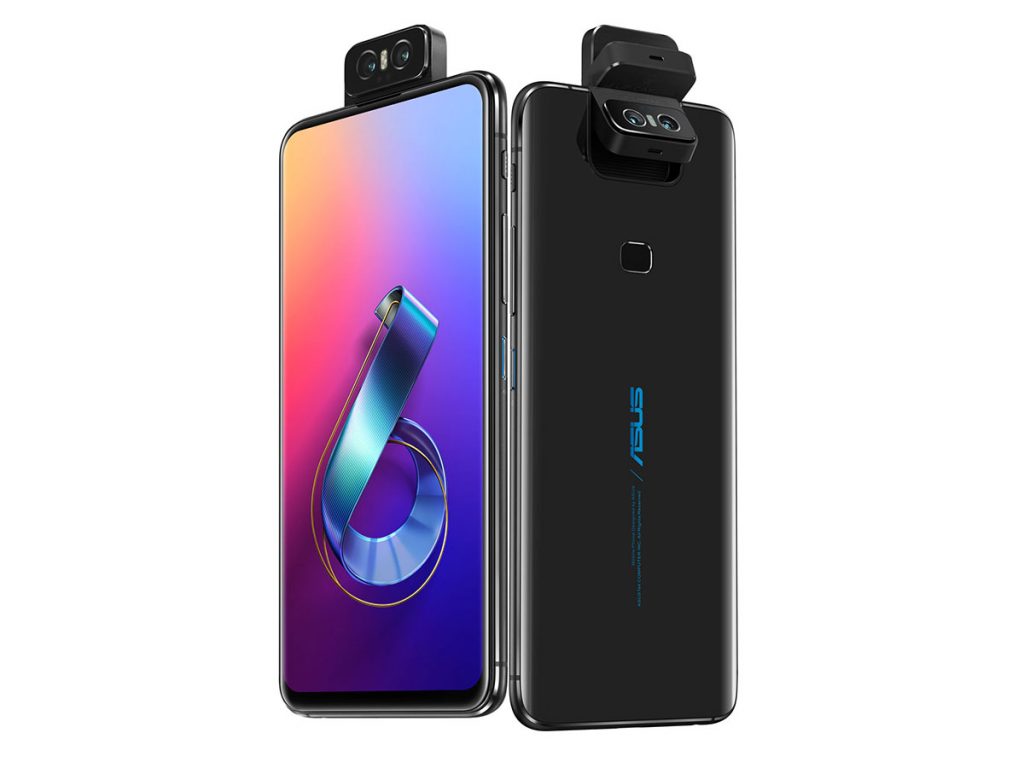
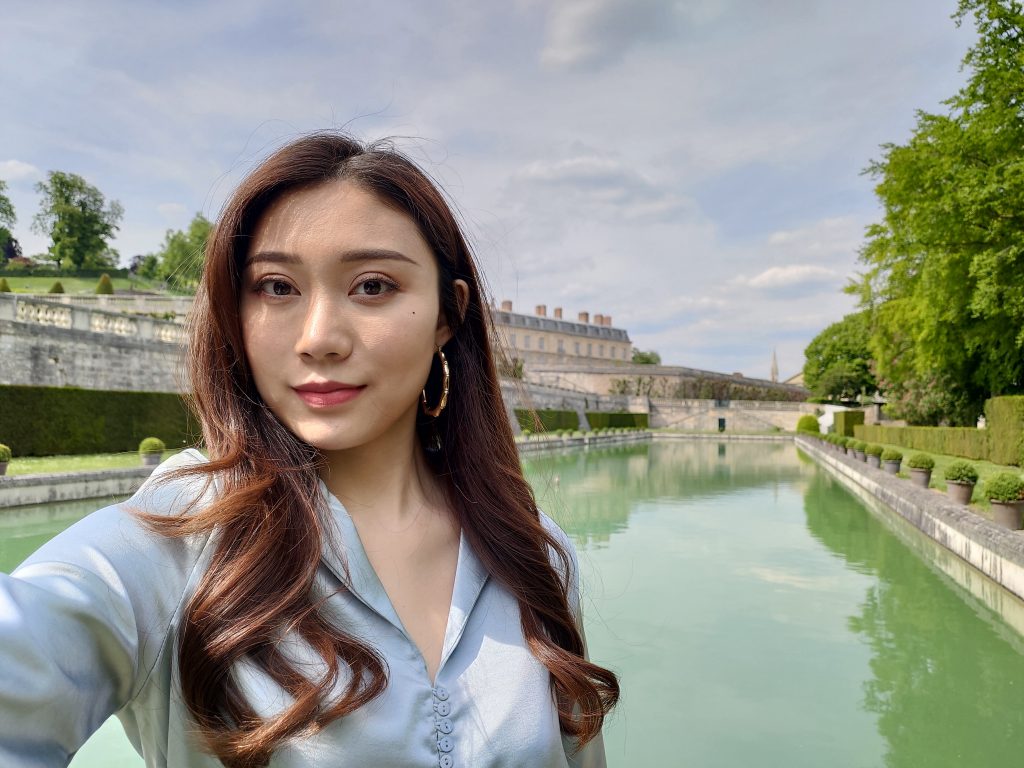
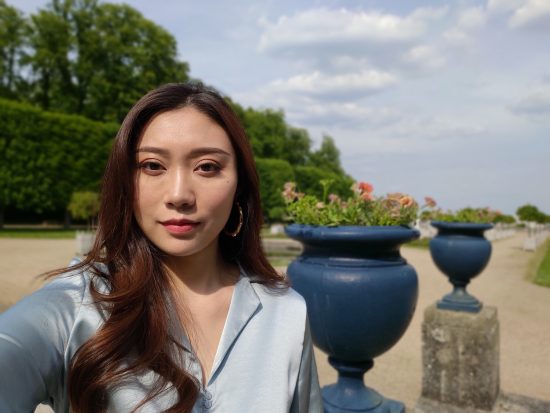
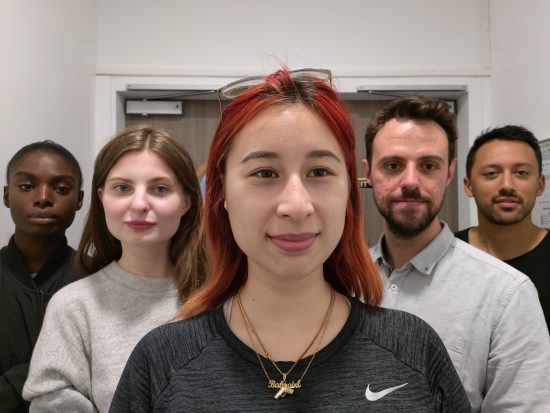



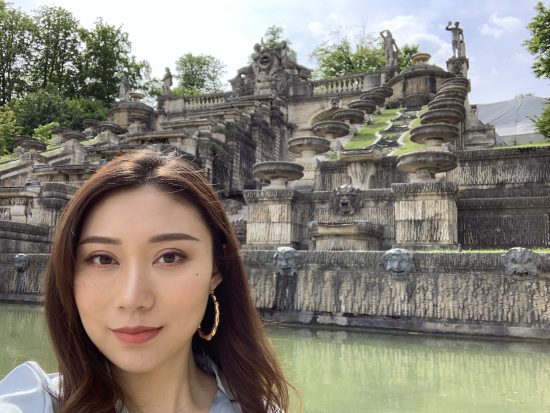

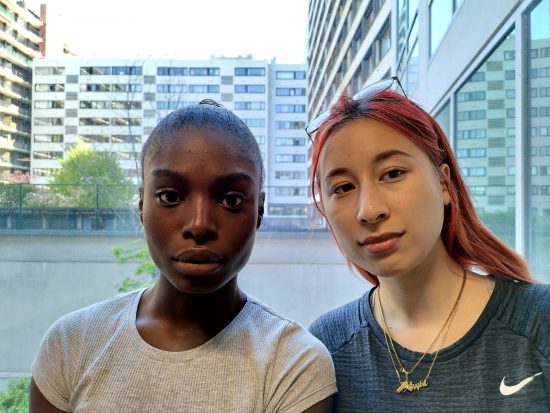
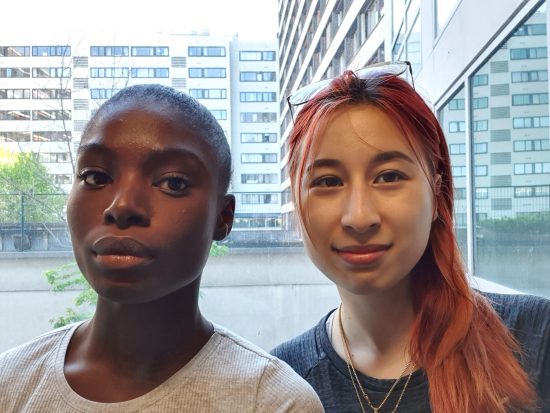
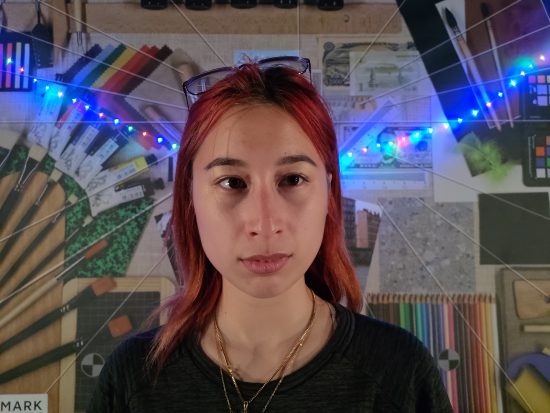
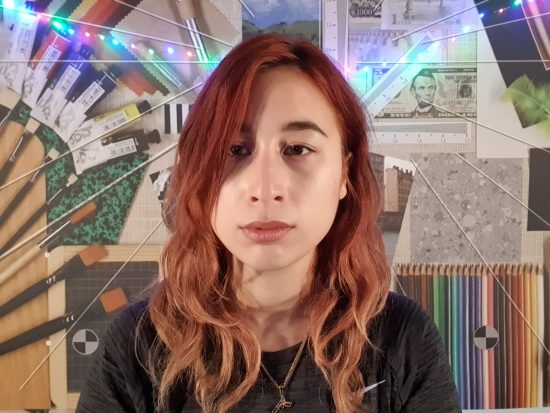






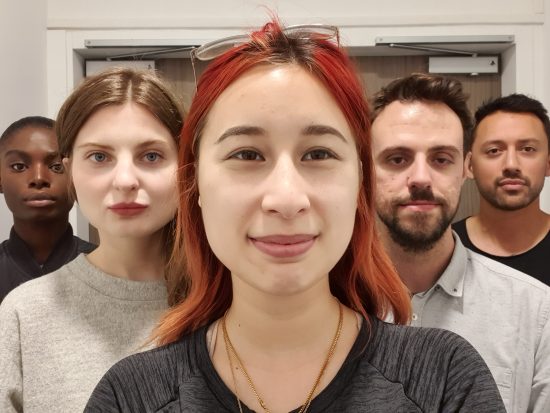
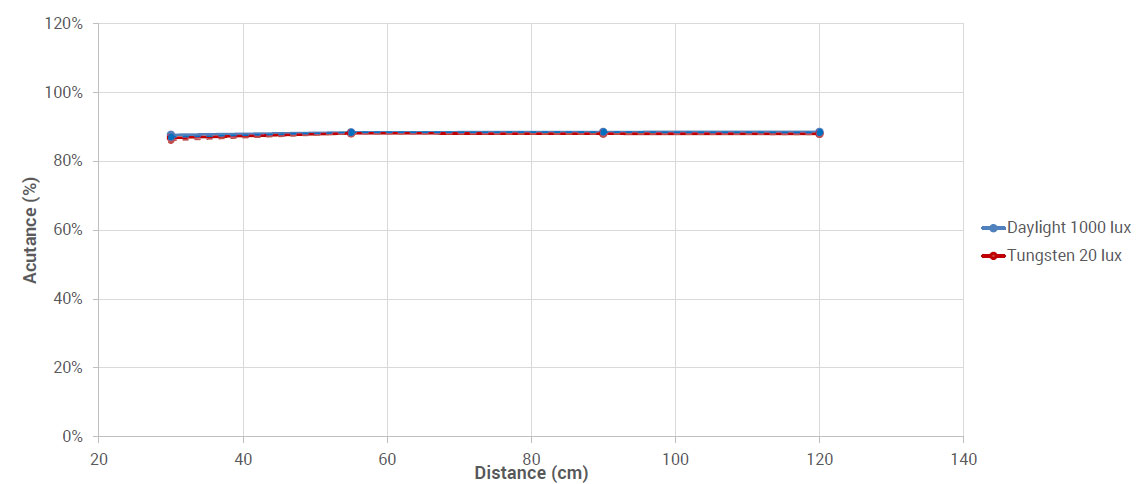


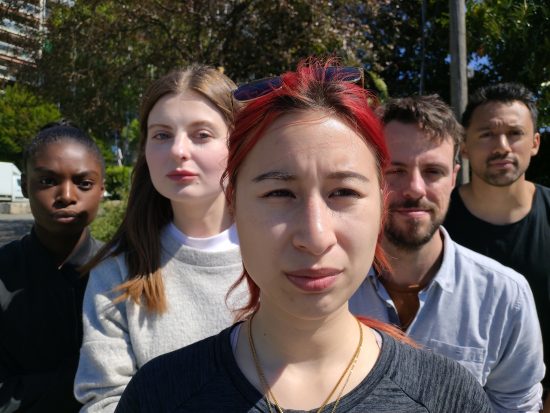
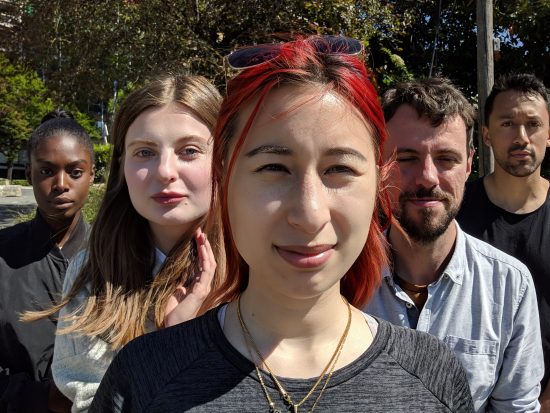
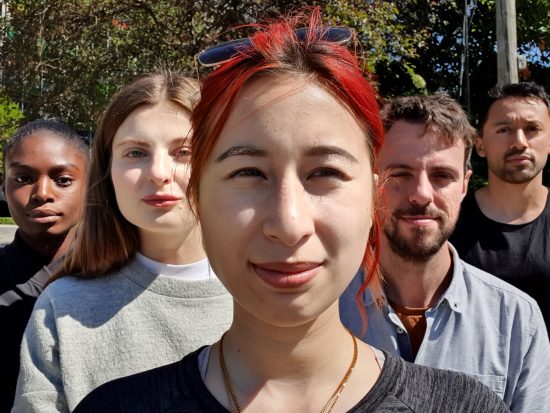
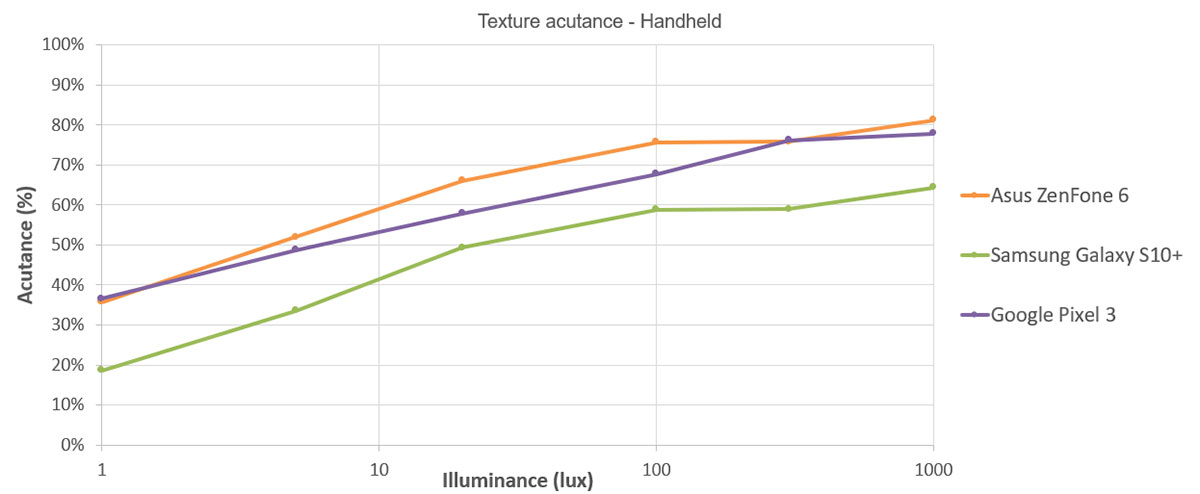
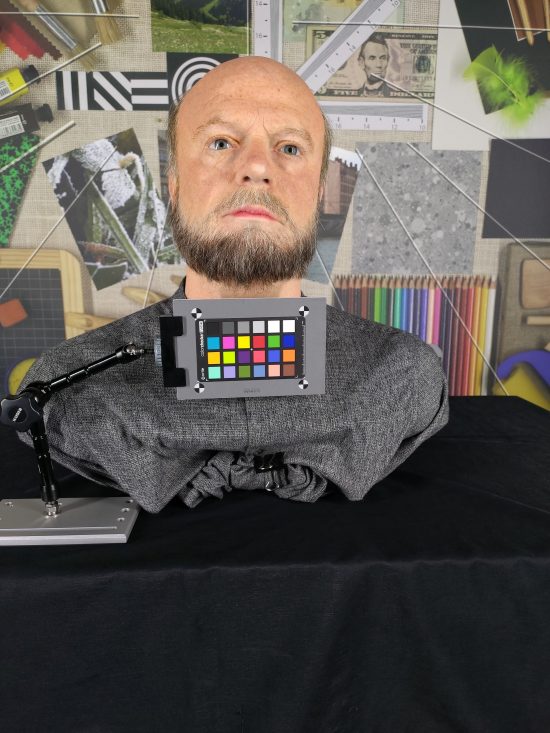
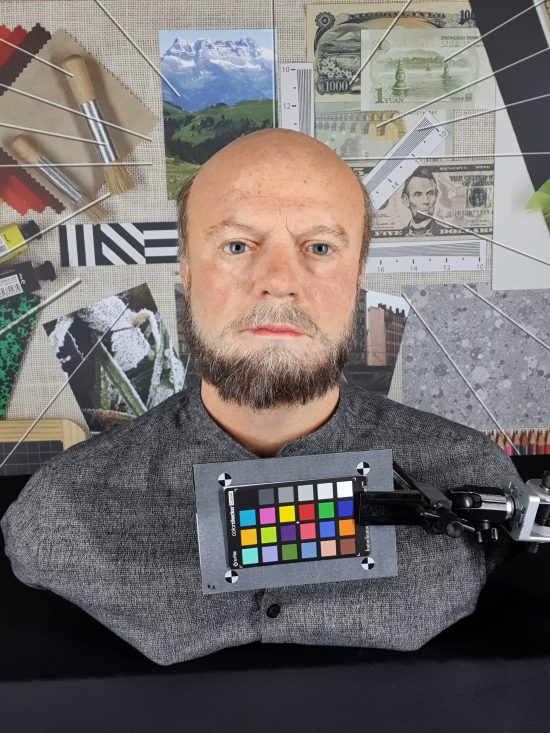
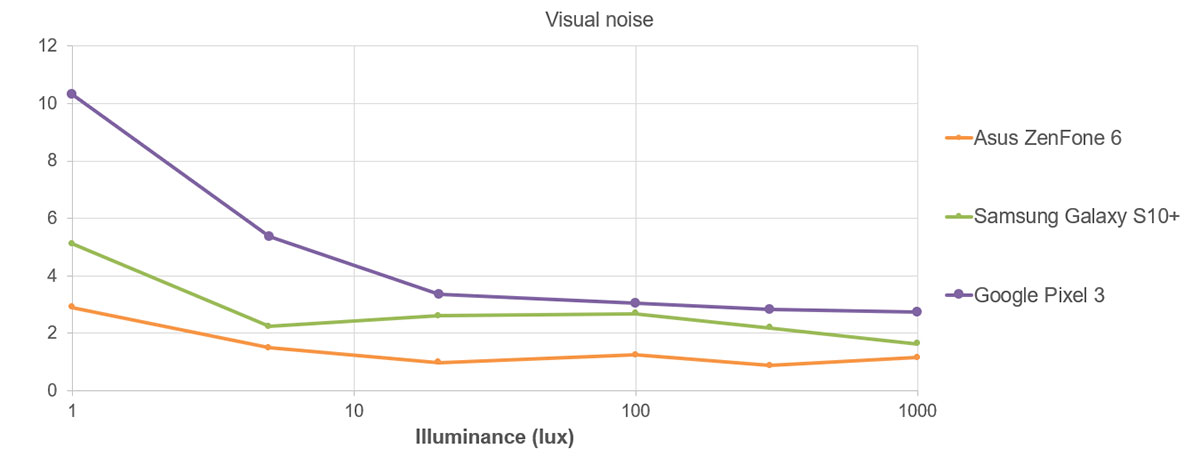
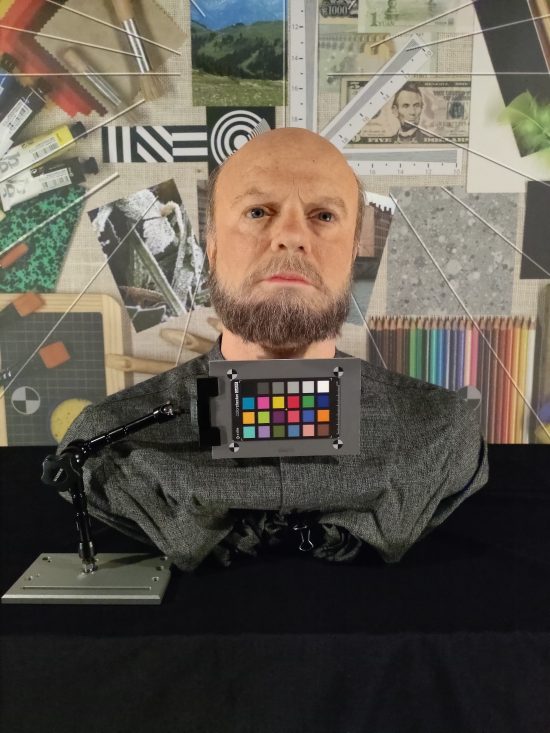
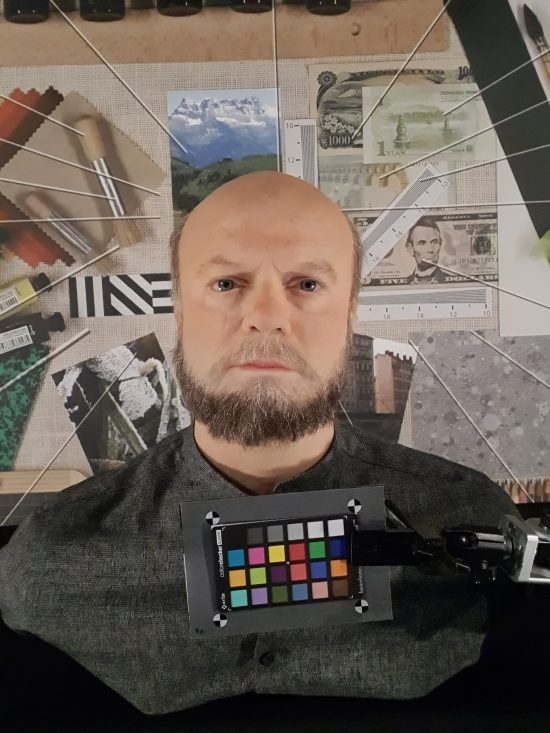

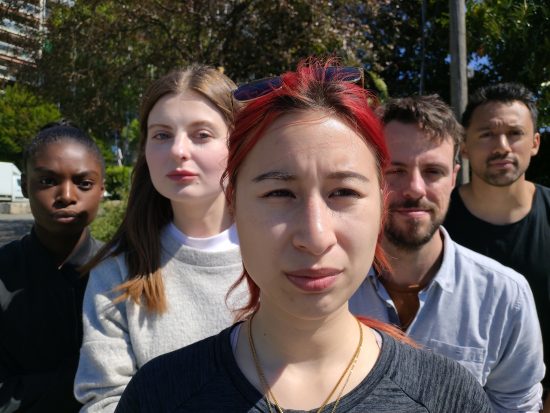







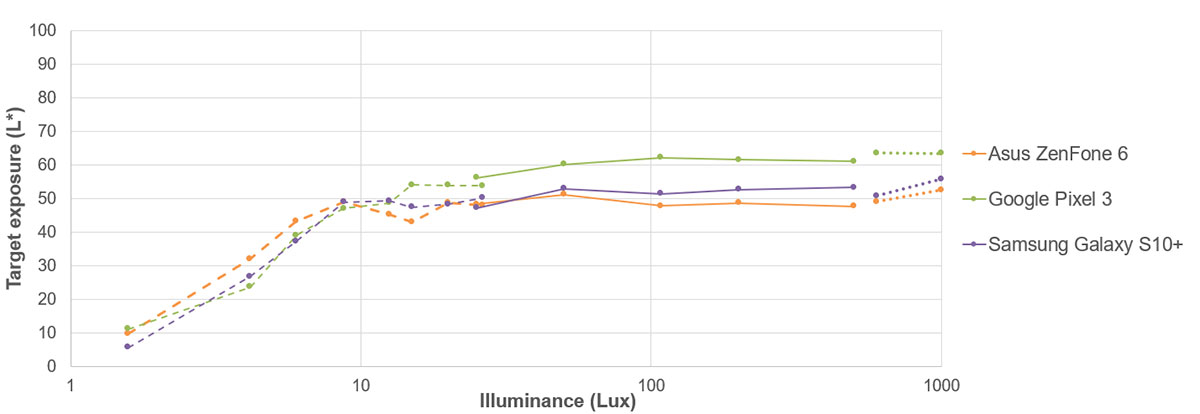
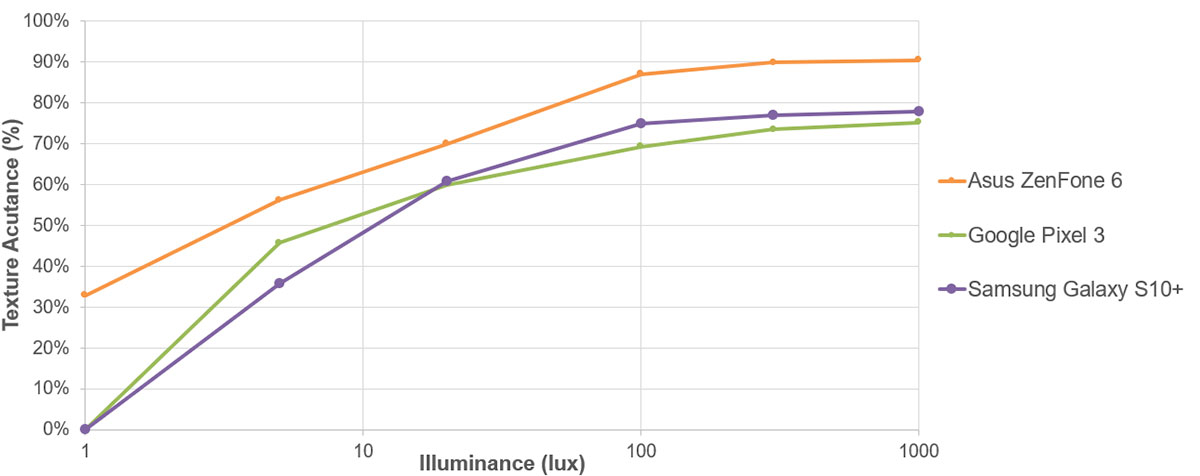
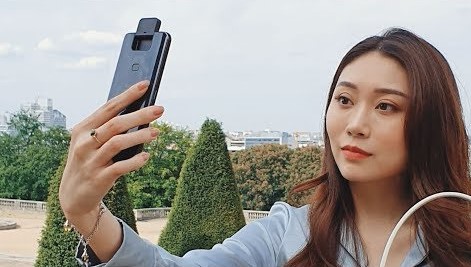



DXOMARK encourages its readers to share comments on the articles. To read or post comments, Disqus cookies are required. Change your Cookies Preferences and read more about our Comment Policy.